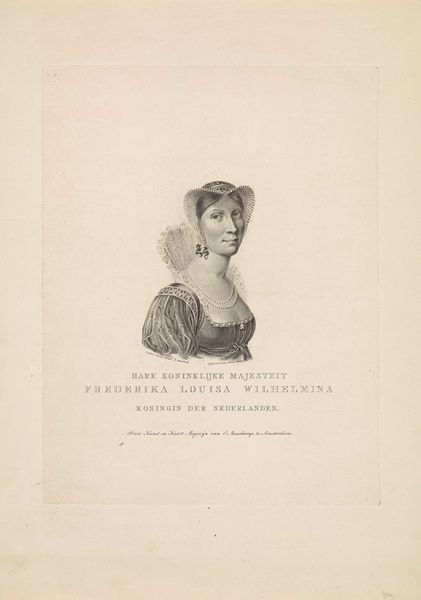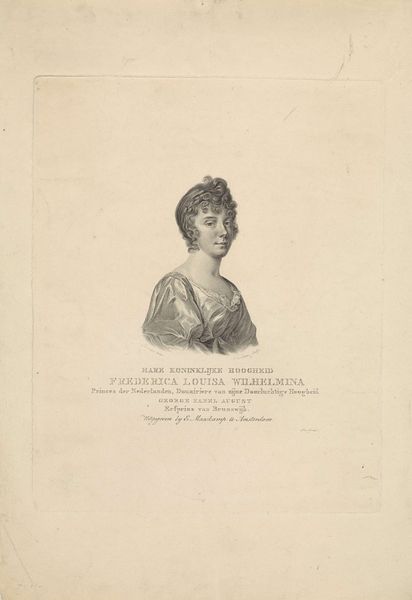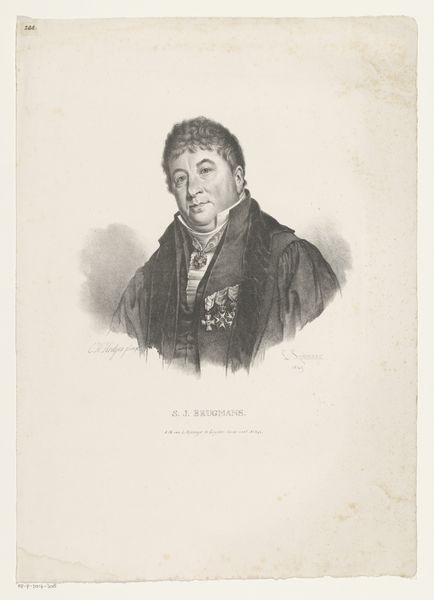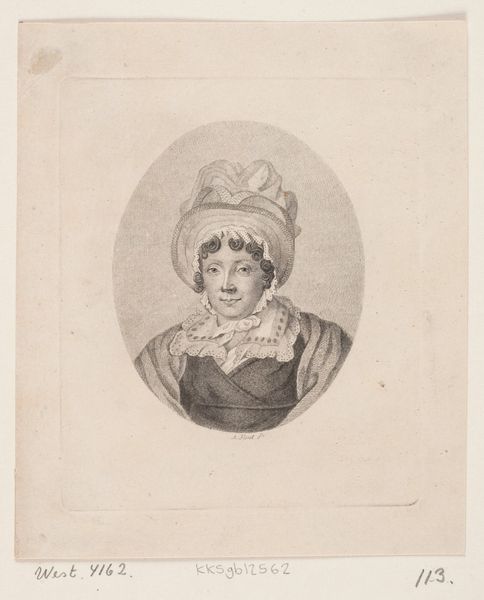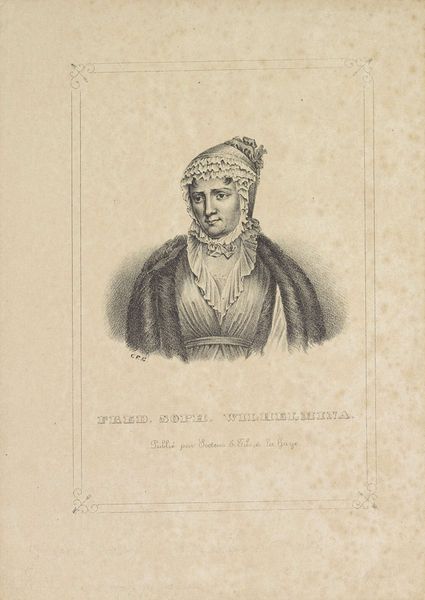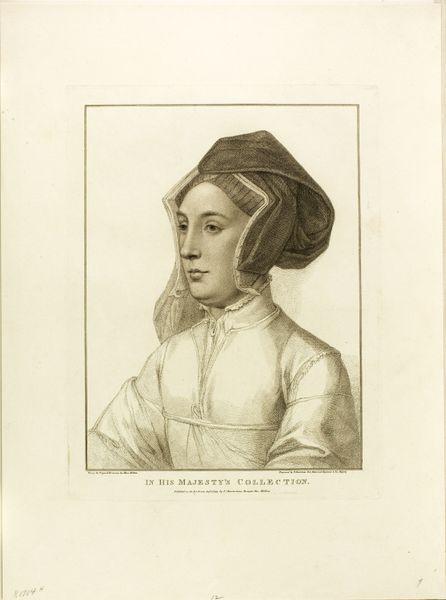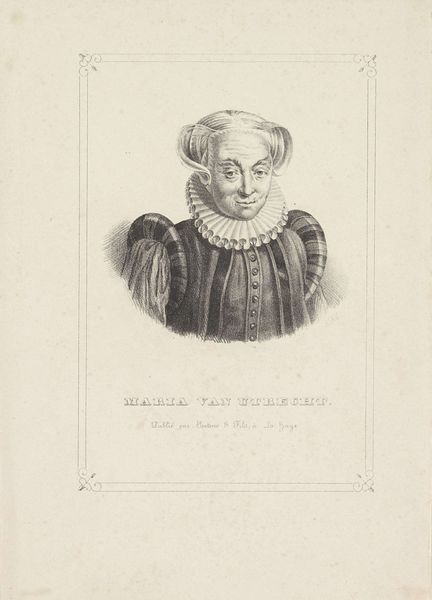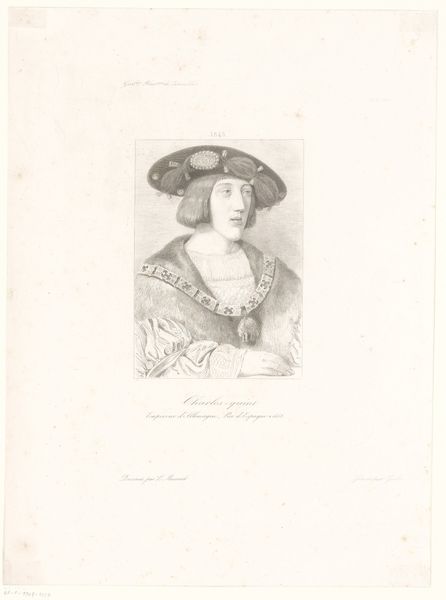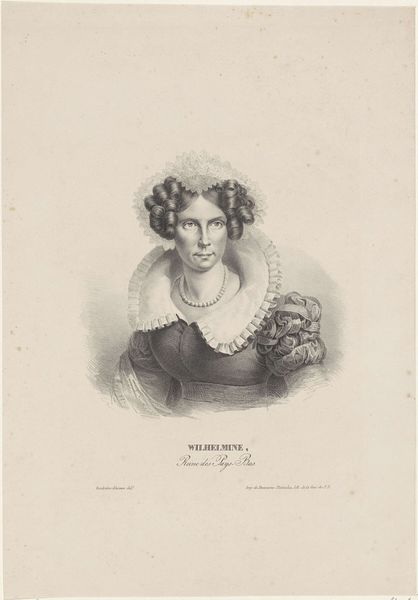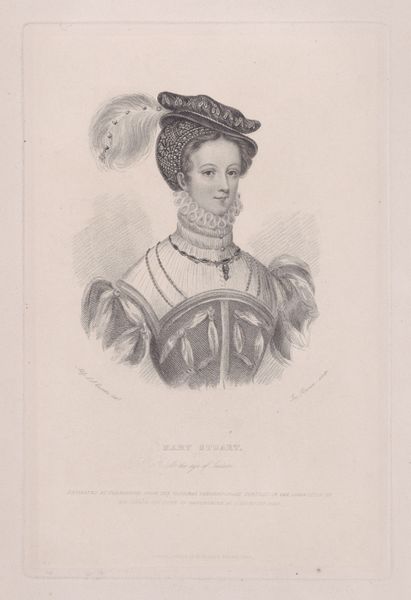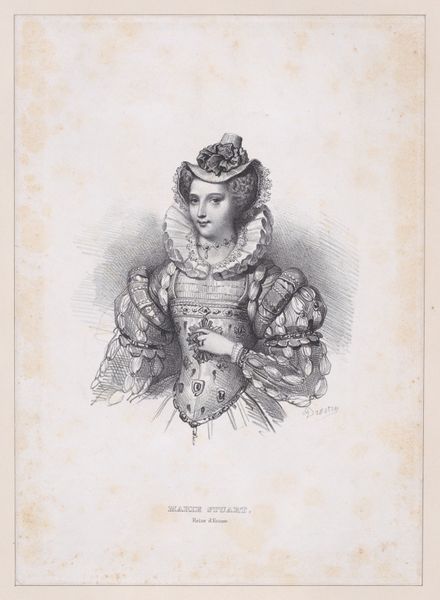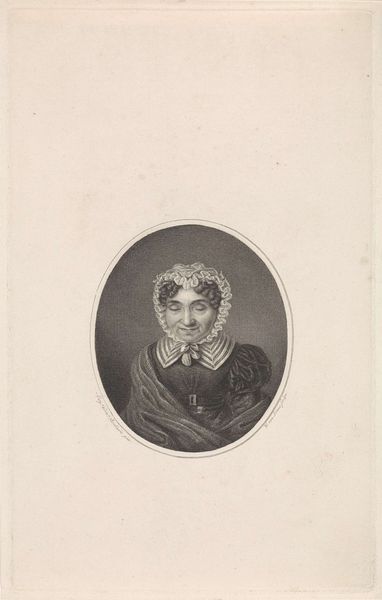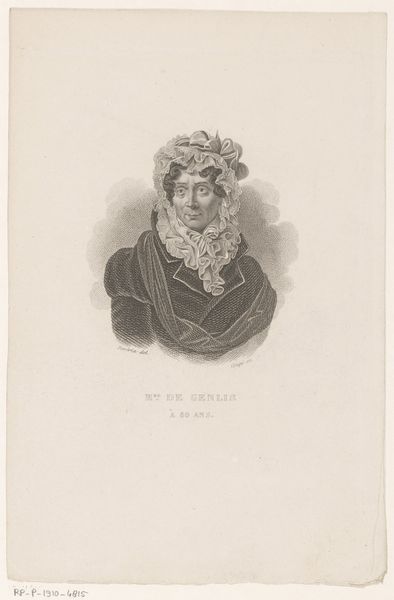
drawing, print, pencil, engraving
#
portrait
#
pencil drawn
#
drawing
#
neoclacissism
# print
#
pencil sketch
#
old engraving style
#
pencil drawing
#
pencil
#
engraving
Dimensions: height 289 mm, width 250 mm
Copyright: Rijks Museum: Open Domain
Editor: So, here we have "Portret van Wilhelmina van Pruisen", dating from 1783 to 1851. It's at the Rijksmuseum and made using pencil and engraving. It looks very… formal, like a carefully constructed image. What’s your take on it? Curator: Well, immediately, I think about the *means* of its production. Engravings were reproducible, allowing images, and therefore, status, to circulate widely. The pencil and engraving combination speaks to a desire for both precision and accessibility. Who had access to such a portrait and what did its consumption signify? Editor: So you're focusing on how it was made and who saw it? I was more drawn to Wilhelmina's expression; she seems... well, not entirely comfortable. Curator: Her expression, read through a material lens, prompts us to consider the labour involved in its creation. Who was the engraver? Were they working on commission? Was this a widely disseminated image? Think about the economy that supported such an industry, from the sourcing of materials to the distribution networks. This image wouldn't exist without that entire production line. Editor: That makes me think differently about it. I was seeing a portrait of an individual, but you are expanding that into the lives of numerous artists and their access to this job because she looks very detailed. It is amazing how someone could accomplish that detail with simple means like a pencil. Curator: Precisely! And what societal values are reflected in the emphasis on such detail? The very act of creating a portrait through these means highlights a culture obsessed with reproduction, access, and perhaps, a growing sense of nationalism. Editor: It's amazing to think that what seems like just a portrait can open up questions about labor, society and dissemination methods. Curator: Exactly. Looking closely at how something is made allows a deeper comprehension about why.
Comments
No comments
Be the first to comment and join the conversation on the ultimate creative platform.
